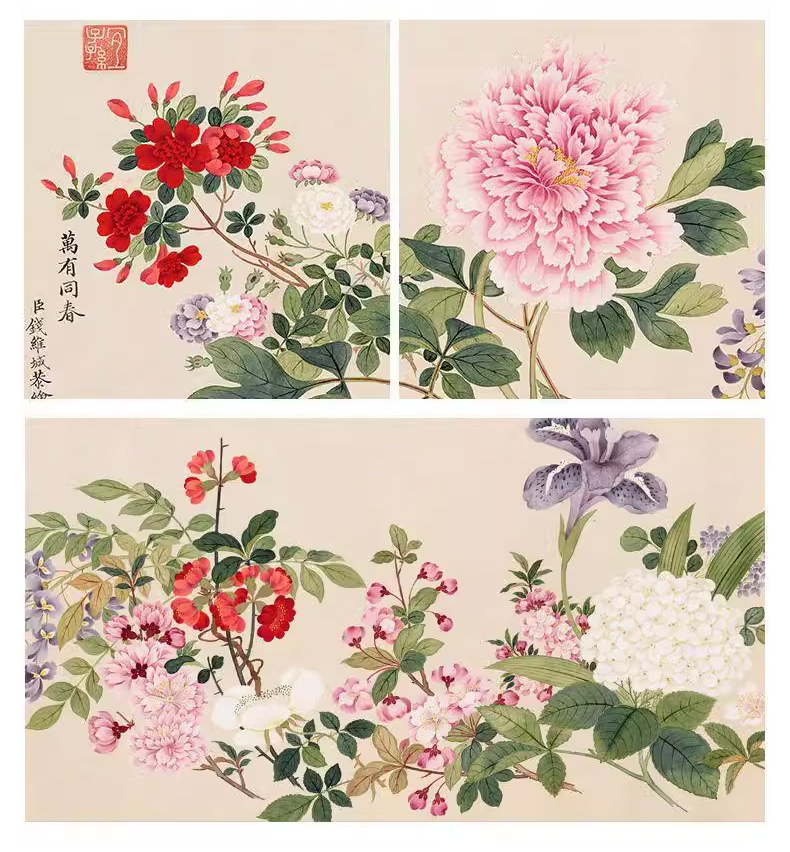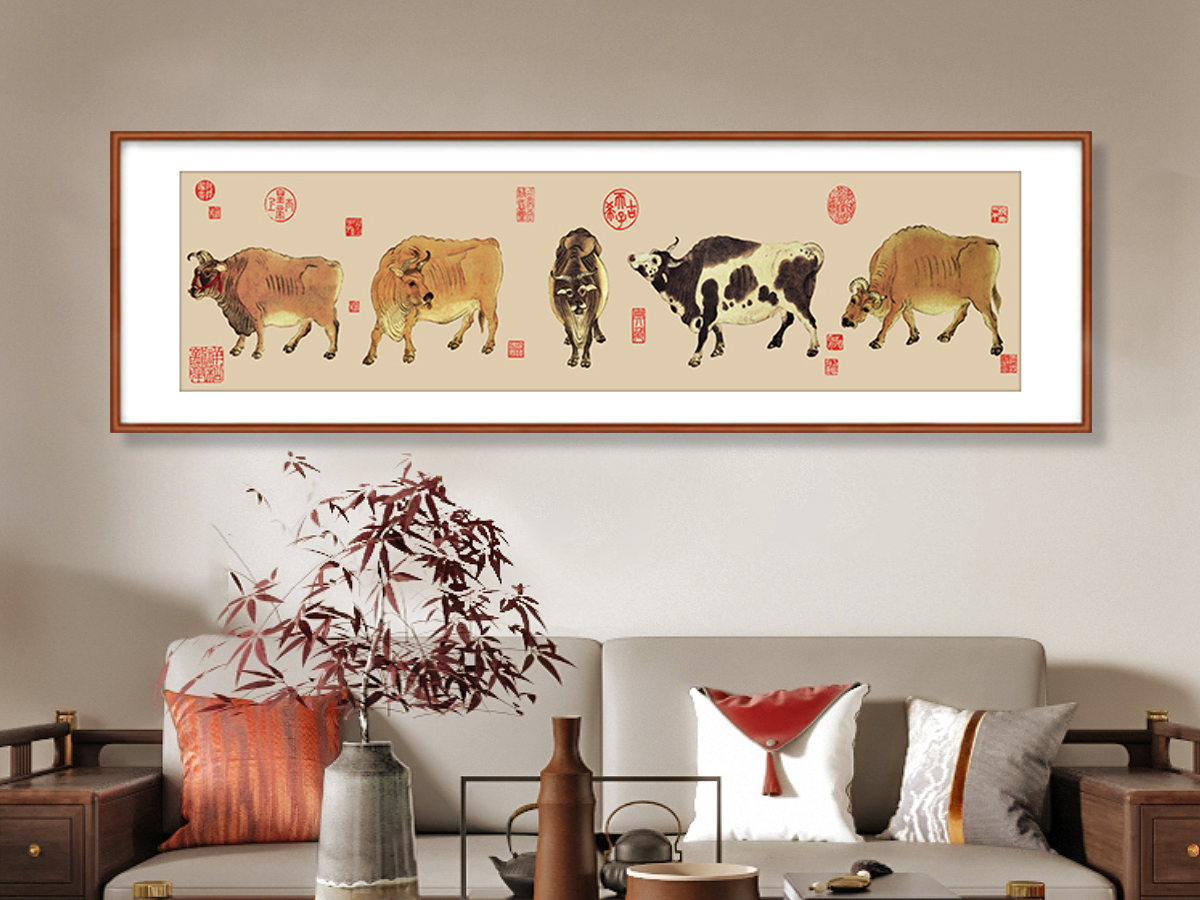In the rich tapestry of Chinese art history, Qian Weicheng’s (钱维城)”Wan You Tong Chun Tu” stands as a remarkable masterpiece. Qian Weicheng(钱维城), originally named Xinlai, styled Zongpan, and known by the sobriquet Chashan, hailed from Wujin, Jiangsu. He was the top – scorer in the imperial examination in the 10th year of the Qianlong reign in the Qing Dynasty and rose to the position of Vice Minister of the Ministry of Punishments. Now, this classic painting has been transformed into a stunning cross – stitch, bringing a new dimension to this age – old art.
A Creation for Royal Celebration
There is a view that the “Wan You Tong Chun Tu” was created as a tribute for Emperor Qianlong’s 60th birthday. It depicts 60 species of spring – blooming flowers using the traditional technique of “zhezhi” (broken – branch) composition, which is said to correspond to the 60 – year cycle of the Chinese calendar. This cross – stitch version faithfully reproduces the original’s intention, allowing you to own a piece of this historical celebration.

Exquisite Painting Techniques Embodied in Cross – Stitch
The Magic of Zhezhi Technique in Cross – Stitch
The original painting uses the zhezhi method to arrange more than thirty to fifty – odd kinds of flowers that bloom in different seasons. They are densely and neatly arranged in the picture according to size. In the cross – stitch, every detail of this arrangement is carefully replicated. Each cross – stitch stitch is like a tiny brushstroke, bringing to life the complex composition of the original painting. You can spend hours admiring how the flowers seem to grow and intertwine, just as in the traditional Chinese painting.
Meticulous Boneless Painting in Cross – Stitch
The original work painted the leaves and petals with Yun Shouping’s boneless technique, resulting in a lifelike, finely – detailed, and brightly – colored image. In the cross – stitch, the boneless effect is recreated through the precise choice of thread colors and the way stitches are placed. The smooth transitions of color and the delicate shapes of the flowers are all captured, making this cross – stitch a true testament to the art of both painting and embroidery.

Artistic Features That Dazzle in Cross – Stitch
Exquisite and Delicate
The cross – stitch of “Wan You Tong Chun Tu” is a showcase of painstaking detail. Every flower and leaf’s shape, texture, and color are meticulously rendered, just like in the original painting. You can see the veins on the leaves and the gentle curves of the flower petals, all painstakingly created with cross – stitches. It’s a celebration of the natural beauty of flowers, and a testament to the patience and skill of the cross – stitch artist.
Rich and Magnificent
The cross – stitch features a profusion of flower species, with bright and eye – catching colors. The overall effect is one of opulence and vitality, full of the rich, noble air of the imperial court. When hung on your wall, this cross – stitch will be a focal point, bringing a touch of imperial – era grandeur to your home.
High Praise for the Original and Its Cross – Stitch Version
The original “Wan You Tong Chun Tu” was highly regarded for its artistic achievements. Qian Weicheng’s skill in creating elegant zhezhi flower paintings was well – recognized. The late Qing – Dynasty collector Yan Shiqing considered this imperial – tribute painting to be extremely vivid, second only to Yun Shouping’s works, and ranked it as the best among his flower – painting collections. The cross – stitch version not only inherits the artistic value of the original but also adds a new layer of tactile and visual charm. It’s a unique way to appreciate and own a piece of Chinese art history.
If you’re a lover of art, cross – stitch, or simply looking for a statement piece for your home, the “Wan You Tong Chun Tu” cross – stitch is an ideal choice. It combines the beauty of a classic Chinese painting with the charm of cross – stitch craftsmanship. Don’t miss the opportunity to bring this piece of art into your life.







Leave a Reply